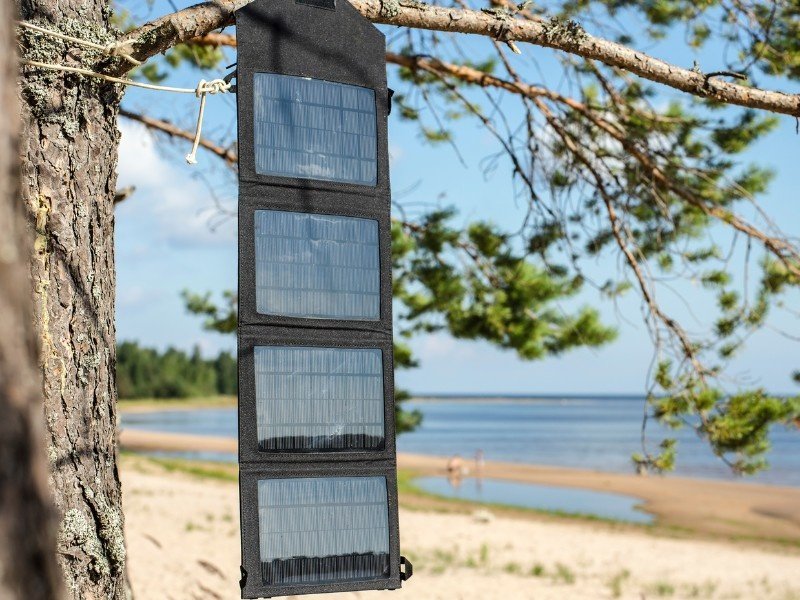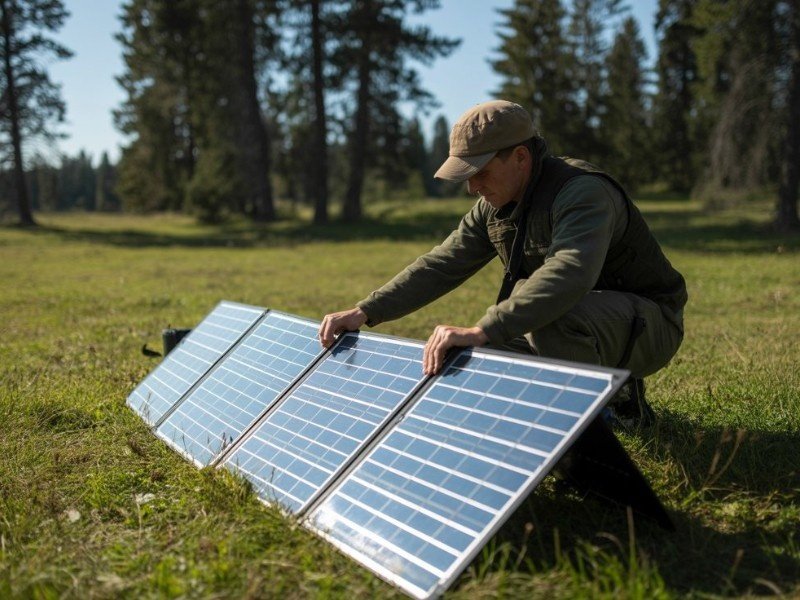As renewable energy grows in popularity, foldable solar panels have emerged as a portable, eco-friendly power source. These compact and flexible devices are designed to use the sun’s energy while being easy to transport and set up, making them ideal for outdoor enthusiasts and anyone looking for a convenient way to charge devices on the go.
In recent years, foldable solar panels are no longer just for tech-savvy campers. The growing availability reflects a shift toward renewable energy sources that fit modern, mobile lifestyles. Whether you’re hiking, camping, or facing a power outage, these portable panels offer a reliable source of energy when you need it most. In this blog, we will discuss in detail Foldable Solar Panels.
How do foldable Solar Panels Work?
Foldable solar panels function similarly to traditional solar panels, converting sunlight into electricity through photovoltaic cells. The difference lies in their design, foldable panels are made from lightweight, flexible materials that allow them to fold or roll up for easy transport. Once unfolded, the solar cells absorb sunlight and generate power, which can be used to charge batteries or directly power devices like smartphones, laptops, and small appliances.
Advantages of Foldable Solar Panels
The popularity of foldable solar panels lies in their flexibility and convenience. These panels are perfect for those who require a remote power source without the bulk and permanence of traditional solar setups.
1. Portability and Convenience
One of the biggest advantages of foldable solar panels is that they can be carried anywhere. Designed to be lightweight and compact, they can be easily carried in a backpack or stored in the trunk of a car. For campers, hikers, and anyone frequently on the move, they offer an easy way to keep devices charged without needing access to a traditional power source.
2. Versatility in Use
Foldable solar panels aren’t just for outdoor adventures. They’re also a great resource during emergencies. When the power goes out due to storms or other unexpected events, these panels provide a reliable backup source of energy to charge essential devices.
3. Easy Setup and Storage
Unlike large solar installations that require professional setup, foldable panels are user-friendly. You can unfold them and start using them within minutes. Once you’re done, they fold up neatly for storage, taking up minimal space.
Performance of Foldable Solar Panels
1. Efficiency and Power Output
The performance of foldable solar panels has improved over time. While they may not match the output of fixed, roof-mounted systems, they are efficient enough for most portable needs. Modern foldable panels can generate enough power to charge multiple devices simultaneously or even run small appliances in low-power situations.
2. Durability in Various Conditions
Most foldable solar panels are built with durability in mind. They are designed to hold out against the elements, from blazing sun to light rain. Many come with waterproof or weather-resistant features, making them reliable for outdoor use. However, like any technology, their lifespan can depend on how well they are cared for and the conditions they are exposed to.
Comparison of Foldable Solar Panels with Traditional Panels
Foldable solar panels are ideal for temporary power needs, such as camping, road trips, or emergencies. If you’re looking for a long-term solution to power your home, traditional fixed panels are more efficient and cost-effective in the long run. Foldable panels are best suited for individuals who need a portable energy source, while traditional panels are better for those who want a permanent, higher-output system.
Limitations of Foldable Solar Panels
While foldable solar panels are incredibly useful, they do have some limitations:


Applications of Foldable Solar Panels
Cost of Foldable Solar Panels
The cost of foldable solar panels varies depending on their size, power output, and brand. On average, smaller models for charging personal devices range from $50 to $300, while larger, more powerful panels for charging multiple devices or appliances can cost anywhere from $300 to $1,000. While the upfront investment may seem high, the long-term savings on energy bills, especially for frequent travellers or remote workers, can make it worthwhile.
Future of Foldable Solar Technology
The future of foldable solar panels looks promising as technology continues to improve. Researchers are working on increasing the efficiency and durability of these panels while making them even lighter and more compact.
One challenge faced by foldable solar technology is maintaining a balance between portability and power output. As technology advances, manufacturers are focusing on improving efficiency without sacrificing the lightweight, flexible design that makes these panels so appealing.
Conclusion
Foldable solar panels are an excellent option for those who need portable, temporary power solutions. They’re perfect for outdoor enthusiasts, emergency preparedness, and everyday use for small electronic devices.
While foldable solar panels may not replace traditional systems, their versatility and portability make them an appealing option for a wide range of uses. As technology continues to evolve, they are likely to become even more efficient and accessible, making portable solar power a practical solution for more people.




